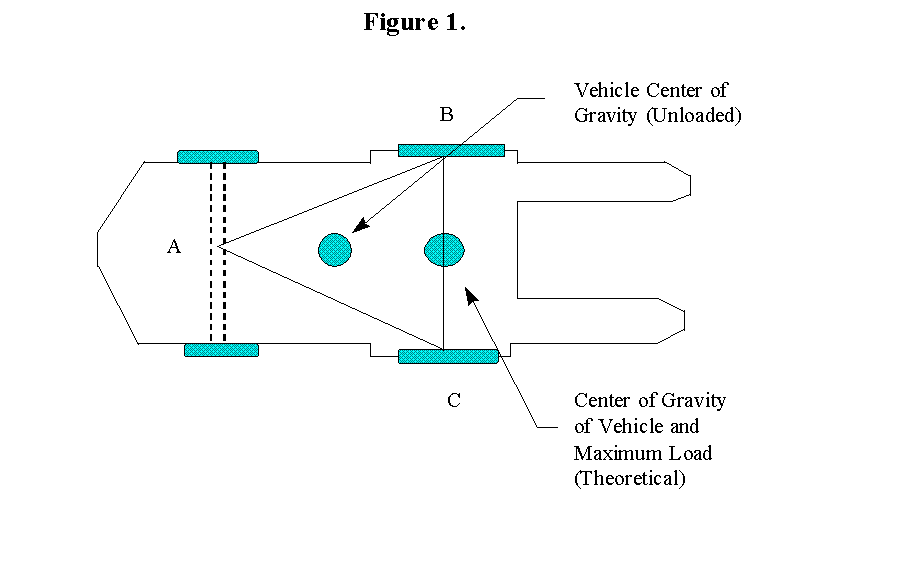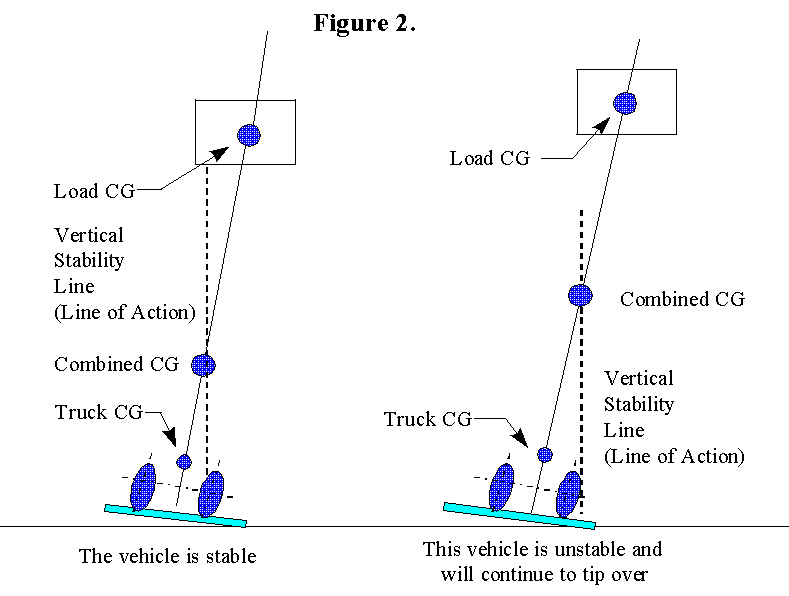|
Versions :
stabilite_des_chariots_elevateur.php
trucks_stability_an
Document de discussion de recommandation et d'enseignement sur l'utilité
à mieux gérer la conduite du chariot par une bonne compréhension du système de
stabilisation dans toutes les situations et conditions d'utilisation.
OPERATOR TRAINING
FOR POWERED INDUSTRIAL TRUCK - POWERED INDUSTRIAL TRUCKS STABILITY
SUMMARY OF APPENDIX A


-
A-2. General
-
Stability determination for a powered industrial depends on a few basic
principles. There are many factors that contribute to a vehicle's stability:
-
The "stability triangle," used in most stability discussions, demonstrates
stability simply.
-
A-3. Basic Principles
-
Determining whether an object is stable is dependent on the object's
moment at one end of a system being greater than, equal to, or smaller
than the object's moment at the system's other end. This is the same
principle on which a see-saw works. If the product of the load and
distance from the fulcrum (moment) is equal to the moment at the device's
other end, the device is balanced and will not move. However, if there is a
greater moment at the device's one end, the device will try to move
downward at the end with the greater moment.

-
Longitudinal stability of a counterbalanced powered industrial truck
depends on the vehicle's moment and the load's moment. In other words,
if the mathematic product of the load moment (the distance from the front
wheels, the point about which the vehicle would tip over) to the load's
center of gravity times the load's weight is less than the vehicle's moment,
the system is balanced and will not tip forward. However, if the load-moment is greater than the vehicle-moment, the greater load-moment will
force the truck to tip forward.

 Abrégé
en vidéos non commercial de 25 minutes Abrégé
en vidéos non commercial de 25 minutes  chariot automoteur osha
chariot automoteur osha  14/10/2003
14/10/2003

Notes:
-
When the vehicle is loaded, the combined center of gravity (CG) shifts toward
line B-C. Theoretically, the maximum load will result in the CG at the line B-C. In
actual practice, the combined CG should never be at line B-C.
-
The addition of additional counterweight will cause the truck CG to shift toward
point A and result in a truck that is less stable laterally.
-
When the vehicle's line of action, or load center, falls within the stability triangle,
the vehicle is stable and will not tip over. However, when the vehicle's line of
action or the vehicle/load combination falls outside the stability triangle, the
vehicle is unstable and may tip over. See Figure 2.



-
A-6. Lateral Stability
-
The vehicle's lateral stability is determined by the lines of action's position
(a vertical line that passes through the combined vehicle's and load's
center of gravity) relative to the stability triangle. When the vehicle is not
loaded, the truck's center of gravity location is the only factor to be
considered in determining the truck's stability. As long as the line of action
of the combined vehicle's and load's center of gravity falls within the
stability triangle, the truck is stable and will not tip over. However, is the
line of action falls outside the stability triangle, the truck is not stable and
may tip over.
-
Factors that affect the vehicle's lateral stability include the load's
placement on the truck, the height of the load above the surface on which
the vehicle is operating, and the vehicle's degree of lean.

-
A-7 Dynamic Stability
-
The dynamic forces that result when the vehicle and load are put into
motion must also be considered. The weight's transfer and the resultant
shift in the center of gravity due to the dynamic forces created when the
machine is moving, braking, cornering, lifting, tilting, and lowering loads,
etc., are important stability considerations.
-
When determining whether a load can be safely handled, the operator
should exercise extra caution when handling loads that cause the vehicle
to approach its maximum design characteristics. For example, if an
operator must handle a maximum weight load, the load should be carried
at the lowest practical height, the truck should be accelerated slowly and
evenly, and forks should be tilted forward cautiously. However, no precise
rules can be formulated to cover all of these eventualities.

21.05.2008 14:50:29
|